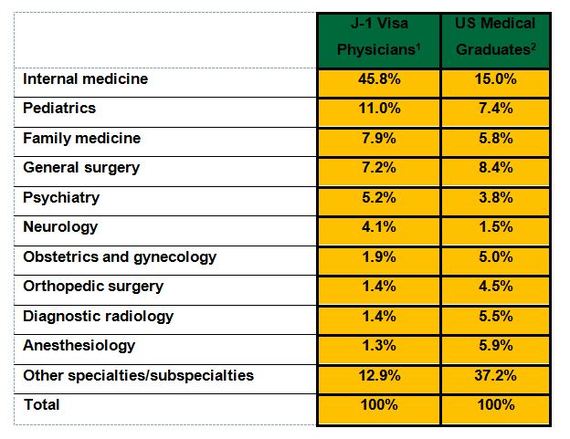co-authored by Zahra Khan
A defining characteristic of Obamacare is that 34 million individuals will be added to the health insurance system. In fact, a key aspect of the debate surrounding the president's health care initiative is whether, and to what degree, adding the uninsured to the system will drive up the price of health care. An equally fundamental issue with Obamacare, however, is often overlooked: America does not currently have enough physicians! The situation becomes even more alarming when one considers that the U.S. population is expanding. As a result, the American Medical Association projects that by 2025, the U.S. will face a shortage of more than 90,000 physicians.
Under these circumstances proper planning is critical to the future success of the country's health care system, especially as it takes almost 10 years to train a physician. Additionally, the majority of American physicians are opting to become "specialists", when the primary need in the U.S. is for "generalist" physicians. The National Ambulatory Medical Care Survey reveals that from 2009 to 2010 the visits per physician were 30 percent higher for generalists than specialists. (Generalists include physicians in family practice, general practice, internal medicine, and pediatrics; the rest of the physicians are considered specialists). Generalist physicians are in particularly great demand due to the greying of U.S. society. A study conducted by Jack M. Colwill et al.(2008) reveals that while the U.S. population as a whole will increase by 18 percent between 2005 and 2025, the population above age 65 will increase by 73 percent. Those above 65 seek care from generalists at twice the rate of those under age 65. [1]
At the same time that the nation is discussing Obamacare, immigration is a second domestic policy question capturing our attention. Often seen as distinct issues, there is, in fact, an important connection between these two policy questions. The American Medical Association estimates that foreign-born doctors constitute approximately 27 percent of the U.S. physician workforce, nearly double the proportion of foreign born in the population as a whole. International Medical Graduates (IMGs) who receive their medical degrees from countries outside the US, represent one interesting thread linking the two policy discussions. Many of these physicians arrive on a temporary J-1 visa under the Conrad 30 program. Conard 30 gives IMGs the option of remaining in the U.S. on completion of a residency program if they serve in a Health Professional Shortage Area for at least 3 years. The U.S. Department of Health & Human Services estimates the need for 7,550 primary care physicians to make up for the shortage in Health Professional Shortage Areas (HPSAs). Conrad 30 reserves 30 slots for International Medical Graduates in Health Professional Shortage Areas in each state. 28 percent of the IMGs who obtain these waivers continue to serve Health Professional Shortage Areas for more than 5 years, compared to the 11 percent of American physicians who continue serving the National Health Service Corps. IMGs are critical resources for Health Professional Shortage Areas; as these areas have not attracted a sufficient number of American physicians.
IMGs also serve Critical Access Hospitals [2] (those with fewer than 15 beds), rural underserved areas [3], patients on Medicare, Medicaid and No-pay patients in a greater proportion than American physicians (Figure 1). In addition, they are more likely to adopt generalist fields than American physicians and thus address the shortage of primary care physicians in the U.S. (Figure 2). They become generalists even though a generalist earns less than many of the specialists.
Figure 1: Percentage of office visits to USMGs and IMGS by patients' primary expected sources of payment
Figure 2: Specialties Pursued by J-1 Physicians and USMGs, 2010-2011 Academic Year
Despite the evidence, few Americans recognize the contributions of IMGs, or more broadly all foreign born physicians, to U.S. healthcare. We as a country should be asking ourselves: What would America have done if these International Medical Graduates never came? Where would our healthcare system be if IMGs and other foreign born physicians were not part of our healthcare system? A report submitted to Congress by the U.S. Department of Health and Human Services stated that the shortage of physicians is exacerbated when a physician faces visa restrictions and is forced to leave the country. Critics of Obamacare, many of whom are also opposed to immigration reform, often ground their opposition on the claim that expanding access will increase the cost of healthcare. However, increasing the pool of foreign born physicians, including IMGs, and thus the overall supply of physicians is an effective means to contain the cost of healthcare. Fixing the broken immigration system to allow more physicians to enter and remain in the country has become essential. America needs foreign born physicians; they are our future doctors.
Sources
1.Colwill, Jack M., James M. Cultice and Robin L. Kruse. 2008. "Will Generalist Physician Supply Meet Demands of an Increasing and Aging Population?" Health Affairs 27(3):w232-w241.
2.Hagopian, Amy, Matthew J. Thompson, Emily Kaltenbach and L. Gary Hart. 2006. "The Role of International Medical Graduates in America's Small Rural Critical Access Hospitals." The Journal of Rural Health 20(1):52-58.
3.Baer, Leonard D., Thomas C. Rickets, Thomas R. Konrad and Stephen S. Mick. 1998. "Do International Medical Graduates Reduce Rural Physician Shortages?" Medical Care 36(11):1534-1544.

